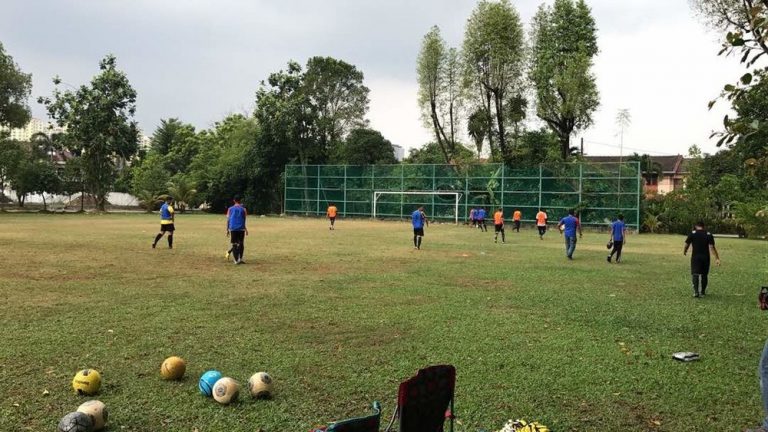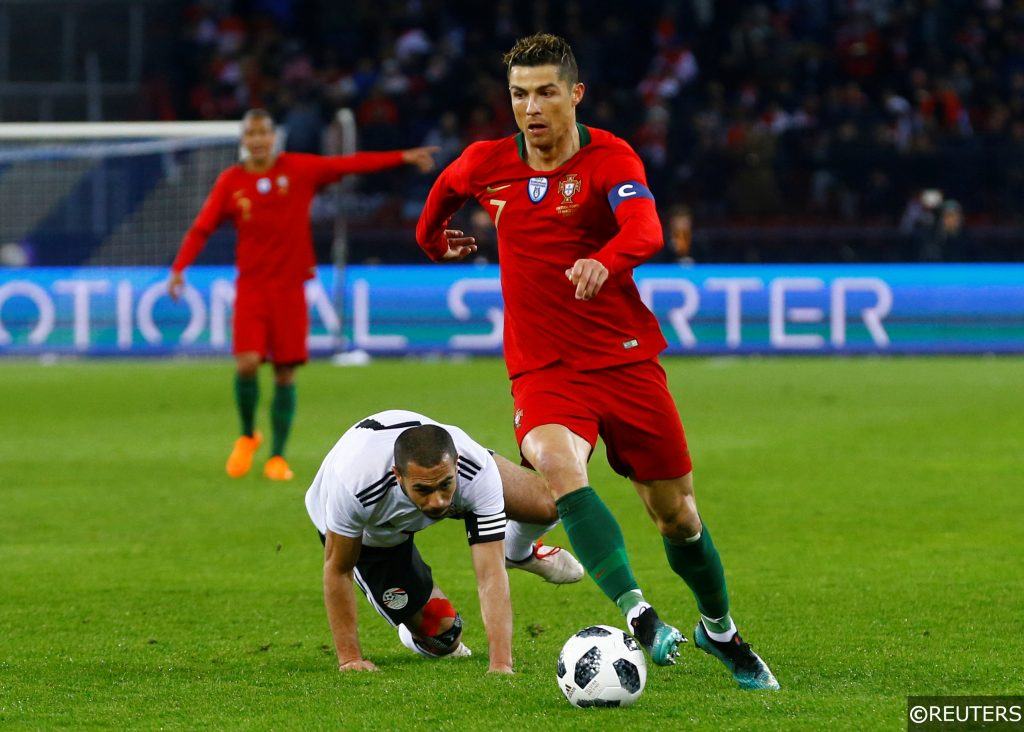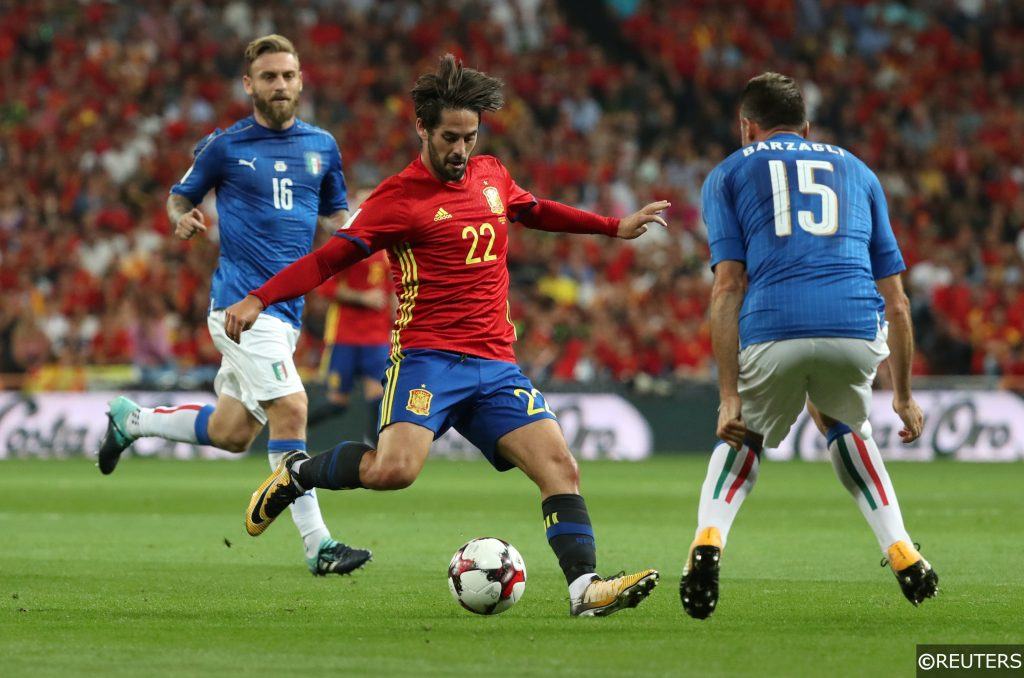Academy Analysis Group B: Which clubs produced the most players at World Cup 2018?

Born in the south east of Ireland, Simon put his life-long love of football to good use when he started a successful independent blog in 2010. That opened up an alternative route to a career in journalism, and having had work published across a number of sites and publications, Simon joined the staff at Spotlight Sports Group in 2018.
(Feature Image Credit: By Iklanmaju1988 (i made on my own) [GFDL (http://www.gnu.org/copyleft/fdl.html) or CC BY-SA 4.0 (https://creativecommons.org/licenses/by-sa/4.0)], via Wikimedia Commons)
Every player you will watch at this summer’s World Cup in Russia is the product of a process. From fledgling footballer to full senior international, each individual has had his own developmental journey to make. Naturally, the coaching and guidance they received as youngsters played a huge part in shaping the well-rounded professionals you see today. To pay tribute to the youth teams and academies that schooled them, we delved into each player’s history to try to establish which academies rank as the most productive in world football.
In part two of our multi-part series, we take a look at the nations from Group B: Iran, Morocco, Portugal and Spain
IRAN
(Name of player – Name of club that produced them)
Alireza Beiranvand – Naft Tehran
Mohammad Rashid Mazaheri – Fajr Sepasi
Amir Abedzadeh – Persepolis
Pejman Montazeri – Foolad
Ramin Rezaeian – Shahrdari Sari
Morteza Pouraliganji – Naft Tehran
Milad Mohammadi – Damash Tehran/Niroo Zamini
Mohammad Reza Khanzadeh – Persepolis/Rah Ahan
Rouzbeh Cheshmi – Pykan/Persepolis
Majid Hosseini – Saipa
Ehsan Hajsafi – Zob Ahan
Masoud Shojaei – Saipa
Ashkan Dejagah – Hertha BSC
Vahid Amiri – Datis Lorestan
Omid Ebrahimi – Shahrdari Neka
Saeid Ezatolahi – Shahrdari Brandar Anzali/Malavan
Mehdi Torabi – Saipa
Saman Ghoddos – Malmo/IF Limhamn Bunkeflo
Ali Gholizadeh – Saipa
Karim Ansarifard – Inter Campus/Saipa
Reza Ghoochannejhad – Heerenveen
Alireza Jahanbakhsh – Payan Alborz Qazvin/Damash Gilan
Sardar Azmoun – Oghab Gonbad/Sepahan
Mehdi Taremi – Bargh Bushehr/Iranjavan
More:
Saipa, based in the Alborz Province of Iran is a football club owned by the Iranian car manufacturer of the same name. It makes sense then that the club’s academy is the driving force behind the national team, producing more members of it’s current senior squad than any other club.
5 members of Carlos Queiroz squad were educated at the Saipa academy in Karaj and 2 of those 5, Mehdi Torabi and Ali Gholizadeh still play their football in the senior ranks of the club.
Current Iranian captain Masoud Shojaei, who now plays in Greece with AEK Athens was a part of the Saipa youth set-up in the early 00s. He graduated to the first team before moving to Al Sharjah in the United Arab Emirates in 2006.
The Numbers:
Saipa – 5
Persepolis – 3
Naft Tehran – 2
MOROCCO
Munir Mohand Mohamedi – Ceuta
Yassine Bounou – Wydad Casablanca
Ahmed Reda Tagnaouti – Academy Mohamed IV
Medhi Benatia – Clairefontaine/Marseille
Nabil Dirar – Diegem Sport
Manuel da Costa – Nancy
Romain Saïss – Valence
Hamza Mendyl – Academy Mohamed IV/Lille
Badr Banoun – Raja Casablanca
Achraf Hakimi – Ofigevi/Real Madrid
Mbark Boussoufa – Ajax/Chelsea
Karim El Ahmadi – Twente
Younès Belhanda – Montpellier
Nordin Amrabat – Ajax/Huizen
Fayçal Fajr – Sotteville-Les-Rouen/Oissel
Hakim Ziyech – Heerenveen
Youssef Aït Bennasser – Nancy
Mehdi Carcela – Standard Liege
Sofyan Amrabat – FC Utrecht
Amine Harit – Argenteuil C.O./Nantes
Khalid Boutaïb – Bagnols Pont
Aziz Bouhaddouz – FC Dietzenbach/FSV Frankfurt
Ayoub El Kaabi – Racing de Casablanca
More:
Just 5 of Herve Renards’ Moroccan World Cup squad were trained at clubs in their homeland – that’s the lowest number of home-grown players in any squad competing at the tournament in Russia this summer. With so many players having been scattered across Europe from an early age, the make-up of Morocco’s squad feels extremely cosmopolitan.
Potentially, it makes for an exciting mishmash of footballing ideologies, with so many players schooled so differently during their formative years. The Moroccans have clubs in Belgium, England, Holland and Spain to thank for their current senior internationals.
However, Herve Renard’s own countrymen have had the most influence on the shape of his squad. No fewer than 8 of his players were educated at French academies.
The private Mohammed VI Football Academy near Rabat, Morocco is responsible for producing two current international squad members. The Academy, founded in 2010, was a purpose-built centre of excellence constructed and launched to help find and train the Moroccan football stars of tomorrow.
Goalkeeper Ahmed Reda Tagnaouti and defender Hamza Mendyl are the first two of what the Moroccan FA hope will be many international players to come through the ranks of the Mohammed VI Football Academy. Former Caen manager Pascal Théault is the Technical Director of the Academy, helping to maintain the decidedly French flavour running throughout Moroccan football.
The Numbers:
Mohammed VI Football Academy – 2
Ajax – 2
Various – 1
PORTUGAL

Rui Patrico – Sporting CP
Beto – Sporting CP
Anthony Lopes – OSGL Football
Cedric – Sporting CP
Ricardo Pereira – Futebol Benfica/Sporting CP
Pepe – Corinthians-AL
Jose Fonte – Panafiel/Sporting CP
Bruno Alves – Varzim
Ruben Dias – Estrela de Amadora/Benfica
Raphael Guerreiro – Blanc-Mesnil
Mario Rui – Vasco Game Sines/Sporting CP
Joao Moutinho – Portimonense/Sporting CP
William Carvalho – Algueirao/Sporting CP
Joao Mario – Porto/Sporting CP
Manuel Fernandes – Benfica
Adrien Silva – Bordeaux/Sporting CP
Bruno Fernandes- Infesta/Boavista
Bernardo Silva – Benfica
Andre Silva – Salgueiros/Porto
Goncalo Guedes – Benfica
Gelson Martins – Futebol Benfica/Sporting CP
Ricardo Quaresma – Sporting CP
Cristiano Ronaldo – Andorinha/Sporting CP
More:
Although their success in terms of major trophies pales in comparison to the histories of rivals Benfica and Porto, Sporting CP are undoubtedly the heartbeat of Portuguese football. Their world-renowned academy based in Alcochete is one of football’s most fertile breeding grounds.
Manager Fernando Santos, who managed Sporting briefly himself in 2003, named 13 of the club’s academy graduates in his squad for the World Cup. The high number of Sporting alumni involved at senior level for Portugal is nothing new however, 10 of the 14 players who appeared in the country’s European Championships Final win in 2016 were schooled in Alcochete.
England’s Eric Dier was on Sporting’s books for over ten years. With him included on their list, no other club has produced more players at this summer’s World Cup than Sporting CP (14). Deportivo Saprissa of Costa Rica run Sporting close however, with 13 of their academy graduates making the Costa Rica squad named by Oscar Ramirez.
In contrast, Portuguese big hitters Porto (1) and Benfica (4) have produced just five of their country’s World Cup squad members between them. In terms of youth development, Sporting CP are out on their own.
“Effort, Dedication, Devotion, Glory” is Sporting’s club motto, and those words are inscribed just inside the entrance of the main academy building at their training complex. They are the first word’s the youngsters see every day when they arrive and they are the last ones they read as they leave.
The numbers:
Sporting CP – 13
Benfica – 4
Various – 1
Read More: Can Portugal Repeat Defensive Success at 2018 World Cup?
SPAIN

David de Gea – Atletico Madrid
Pepe Reina – Barcelona
Kepa Arrizabalaga – Athletic Bilbao
Sergio Ramos – Sevilla
Gerard Piqué – Barcelona
Jordi Alba – Barcelona
César Azpilicueta – Osasuna
Dani Carvajal – Real Madrid
Nacho – Real Madrid
Álvaro Odriozola – Real Sociedad
Nacho Monreal – Osasuna
Andrés Iniesta – Barcelona
Koke – Atletico Madrid
Isco – Valencia
Thiago Alcântara – Flamengo/Barcelona
Marco Asensio – Mallorca
Saúl Ñíguez – Atletico Madrid
David Silva – Valencia
Sergio Busquets – Barcelona
Diego Costa – Barcelona EC (Brazil)
Iago Aspas – Celta Vigo
Lucas Vázquez – Real Madrid
Rodrigo – Celta Vigo
More:
Barcelona’s influence on Spanish football is still considerable, though the weight of that influence has lessened somewhat in recent years. 6 of Julen Lopetegui’s 23-man squad were developed at the famous La Masia academy and while that number is still impressive, it’s a far cry from the double-digit Barca contingent that made up the crux of Spain’s 2008 European Championship and 2010 World Cup winning squads.
Holding as man as 300 young players at any given time, La Masia has set the benchmark for the development of young players for a sustained period. Of course, their most famous graduate of all is Lionel Messi, though Los Cules take no less pride in producing an Argentinean international than they do a Spanish one.
La Masia is actually the name of an old Catalan farmhouse where Barcelona used to house the player in their youth teams that came from outside of the region. Barca moved their entire training operation to La Ciutat Esportiva Joan Gamper in 2011, though the nickname “La Masia” has stuck and is still used when referencing anything to do with the club’s youth system.
Madrid clubs Real and Atletico are responsible for producing 6 of Spain’s World Cup squad between them. 13 of the squad currently play their football for one of La Liga’s big three.
The Numbers:
Barcelona – 6
Atletico Madrid – 3
Real Madrid – 3
Read more: Not going to Russia: The Spain “B” Team that could beat most sides at the 2018 World Cup
Follow Free Super Tips on Twitter to stay up to date with our daily tips and predictions or browse more football content on our website:


